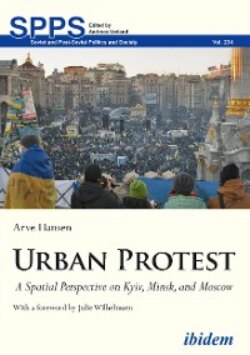Читать книгу Urban Protest - Arve Hansen - Страница 17
1985 to 1991
ОглавлениеFrom the second half of the 1980s, triggered by the 1986 glasnost (transparency/openness) and perestroika (restructuring) reform policies, urban protests started to appear in the Eastern Bloc. In the Baltics, for example, protesters actively used music in what would later be known as the Singing Revolution of 1987–1991 (Smidchens 2014). Opponents of the Soviet regime rganized numerous concerts in city centres and formed a human chain between the three capitals, Tallinn, Riga, and Vilnius, to demonstrate their unity in their discontent with the USSR (2014, 249). These actions inspired similar protests, notably in Ukraine (Hansen, Rogatchevski, Steinholt and Wickström 2019, 36–37). Between 1989 and 1991, the Warsaw Pact gradually fell apart as series of both nonviolent and violent anti-communist revolutions occurred in capital cities across the Eastern Bloc. Notable events include masses of East Germans tearing down the Berlin Wall in November 1989, and the failed military coup of August 1991, which was partly stopped by the masses of people who went out into the public spaces of Moscow and other Russian cities (Marples 2004, 84). The Soviet Union was dissolved later that same year.
